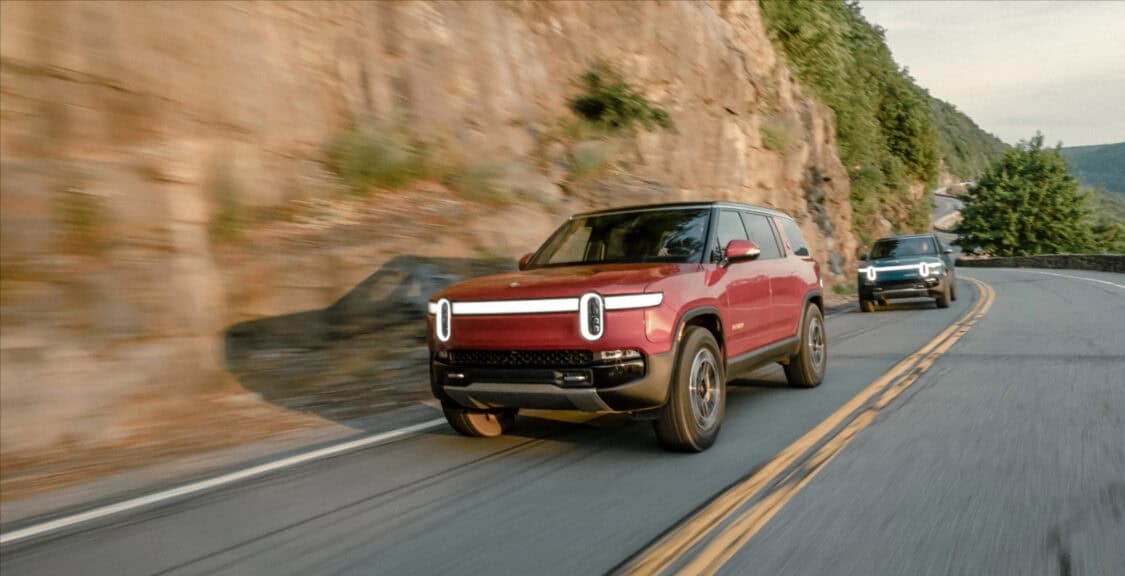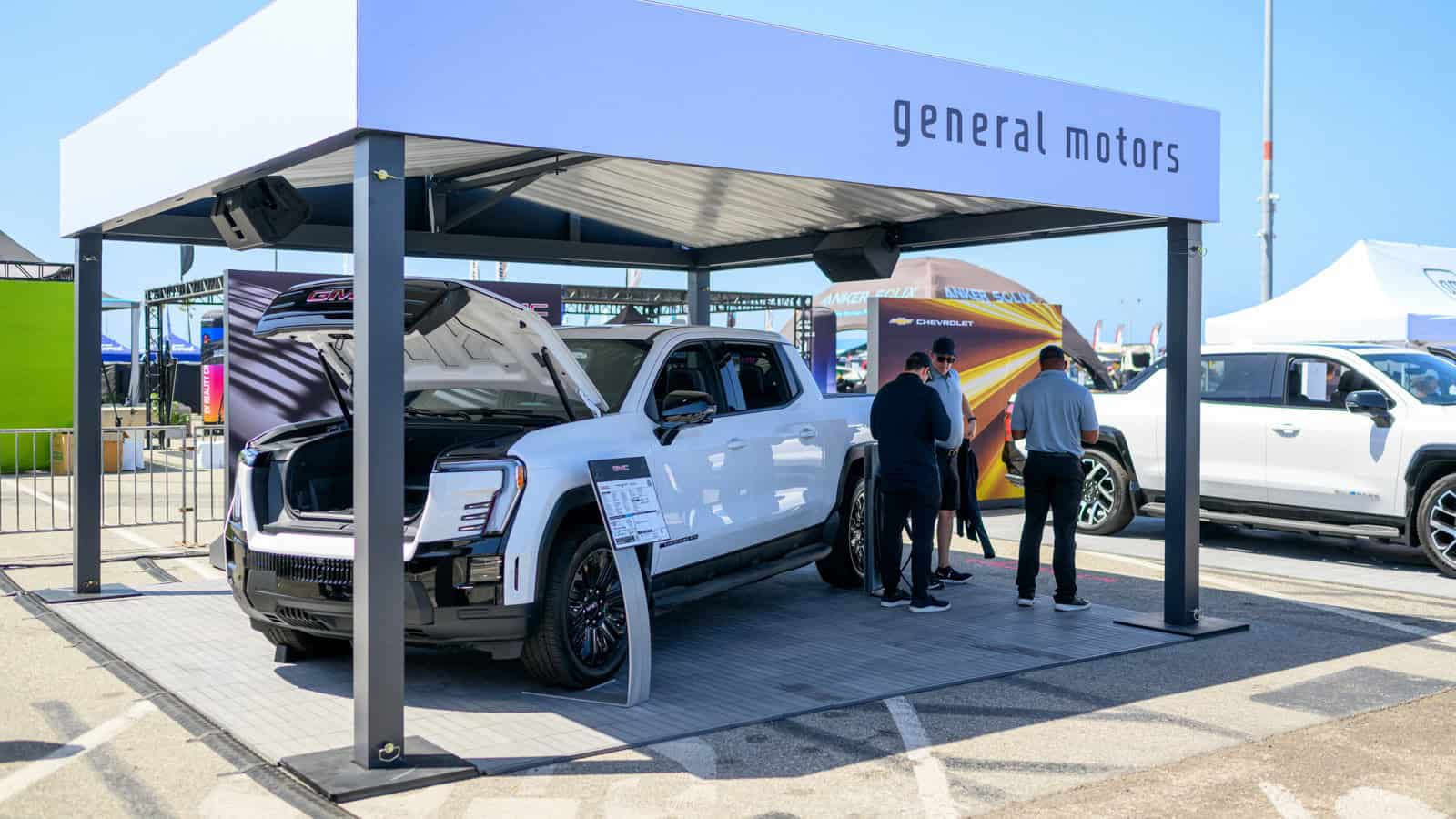- More people around the world are buying EVs, making EV naysayers look foolish.
- EV sales in the U.S. are growing, but they are moving slower than in other countries — even developing countries.
- China’s EV sales are positively impacting air quality by noticeably reducing CO2 emissions.
The doom and gloom about EV sales is grossly misrepresented. EVs are far from fading into oblivion; instead, sales numbers around the globe show EV sales are growing. So much so that by the end of 2024, 20% of all cars sold on the planet will be electric. Around the world, more people are buying EVs. By 2035, half the vehicles on the world’s roads will be electric.
ADVERTISEMENT
This mind-blowing news comes from The International Energy Agency (IEA) — an international organization with the mission to “work with governments and industry to shape a secure and sustainable energy future for all.” The organization was formed in 1974 to respond to disruptions in the oil supply. The IEA is focused on improving access to affordable sustainable energy.
The IEA, in cooperation with the Electric Vehicles Initiative (EVI), releases an annual publication regarding trends in electric vehicles around the globe. The publication looks at EV sales, charging infrastructure, battery demand, and investments with an eye on energy consumption and emissions. The 2024 publication also looks at the pre-owned EV market, lifecycle emissions, and grid impact from charging heavy-duty, electric semis.
In a nutshell, the report shows that EV growth is exceeding expectations, making EV naysayers look foolish. It turns out that people around the planet don’t like to breathe dirty air from car exhaust. The report also shows that EV prices are dropping, so sticker prices are on par with internal combustion vehicles. With lower sticker prices and cheap electricity, EV ownership helps drivers save money on transportation costs.
Sounds like a win-win.
Globally, more EVs are sold in China than anywhere in the world, and it’s making a difference in the country’s air quality. By the end of 2024, China will have sold 10 million electric vehicles — making up about 45% of car sales. In a report released in January 2024, battery electric vehicles in China are reducing carbon emissions with ranges between 8.72 to 85.71 kg of CO2 per vehicle per month. The vehicles that are making the biggest difference in China are EV taxis and medium to large EVs. The report in Nature projects that continued EV use will make “substantial emission reductions.”
ADVERTISEMENT
The United States is the world’s second-largest EV market, and the IEA report projects that 2024 sales will grow by 20% compared to 2023. This means that 11% of all new car sales in the U.S. will be EVs.
In areas with high EV saturation, research shows that air quality improves. Imagine what would happen to air quality around the world if more U.S. drivers believed the facts and chose zero-emissions vehicles.
The United States and Big SUVs

Sadly, the IEA report shows that the United States is lagging behind other markets, but this could change as EVs in the United States get bigger. Historically, since the 2010s, automakers have been able to build larger cars with less stringent tailpipe emissions (this is why pickup trucks and SUVs are so big). Heavier vehicles have more CO2 leeway. Now that drivers in the U.S. are accustomed to big vehicles, they don’t want to switch to smaller ones. So, automakers are designing larger EVs.
When automakers sell electric SUVs, they get a larger margin for profit and drivers get the space they want. Big EVs deliver faster emissions reductions. Consider this statistic from the IEA report: “In 2023, if all ICE and HEV sales of SUVs had instead been BEV, around 770 Mt CO2 could have been avoided globally over the cars’ lifetimes. This is equivalent to the total road emissions of China in 2023.”
In the U.S., two automakers are selling three-row SUVs: Kia and Rivian. According to Kia’s April sales figures, the automaker sold 1,572 Kia EV9 units — giving the South Korean automaker the best EV sales to date. According to Kelley Blue Book, Rivian sold 8,017 R1S models in the first quarter of 2024.
ADVERTISEMENT
But Smaller EVs Are Better for the Planet
Most EVs in the United States fall into the two-row SUV or crossover categories, and the United States is the only country that sells electric pickups like the Ford F-150 Lightning. While the switch to electric vehicles is good for air quality, larger EVs require more minerals, and they put more demand on the electric grid because of the bigger batteries.
EV naysayers often argue that EVs are bad because they require minerals like lithium and cobalt. This argument has been disproven repeatedly, especially as more companies are developing battery-recycling technology.
Bigger isn’t always better. Smaller EVs are better for the planet. Electric SUVs need batteries about 25% larger than small or medium-sized EVs. According to the IEA report, “[If] all electric SUVs sold in 2023 had instead been medium-sized cars, around 60 GWh of battery equivalent could have been avoided globally, with limited impact on range.”
On a positive note, Kelley Blue Book shows that small EVs outsold all electrified SUVs in the first quarter of 2024. Tesla sold 30,842 of its smallest EV — the Model 3 — while Chevrolet sold 7,040 units of the discontinued Bolt. In Q1 2024, The best-selling non-Tesla EV was the Ford Mustang Mach-E with 9,589 units sold.

The Mustang Mach-E is considered a compact crossover and is available with a 70.0-kWh battery or a 91.0-kWh battery. The Tesla Model 3 is typically outfitted with a 60.0-kWh battery pack. The Extended-Range Ford F-150 Lightning has a 131.0-kWh battery.
ADVERTISEMENT
Lower Prices But Few Cheap EVs
The year 2024 is bringing good news for EV buyers. Not only are more models hitting dealership floors, but the cost of electric cars is dropping thanks to lower battery prices, scaling manufacturing, and more competition. While lower prices are good, the United States still doesn’t have many cheap EVs for sale. The cheapest EVs (Chevy Bolt and Nissan Leaf) in the U.S. are in the $30,000 range, while the cheapest ICE cars (Honda Civic and Nissan Sentra) are in the $20,000 range. Prices are expected to balance out by 2030.
It’s no surprise that U.S. automakers aren’t investing in small EVs. In the first quarter of 2024, ICE pickup trucks continue to be top sellers. GM sold 128,926 Chevy Silverado units and 68,597 GMC Sierra units. Ford sold 145,200 F-150 trucks. Shoppers bought a combined total of 60,156 units of Chevy Suburbans and Tahoes, Cadillac Escalades, and GMC Yukons.
Looking at the sales of full-size ICE pickup trucks and giant SUVs (many with price tags with six figures), automakers know that those drivers will not purchase cheap EVs. These sales numbers show that the United States has a long way to go to move more drivers to electric vehicles, especially as three of these vehicles are on Forbes’ “Environmentally Meanest” cars for 2024: the Ford F-150 Raptor, GMC Sierra, and Cadillac Escalade V.
ADVERTISEMENT
The Proof Is in the Numbers

While it’s wonderful to see more drivers opting for EVs, it’s frustrating to see so many big cars with horrible EPA-estimated fuel ratings still on the road. A small EV can’t do much to negate the damage done by the emissions from full-size pickup trucks and SUVs.
The proof is the numbers, though: gas-powered cars create tailpipe emissions that harm people’s health. Tailpipe emissions cause an increase in cardiovascular disease and acute asthma. A proven way to improve air quality is to switch from gas-powered to electric.
Big Oil companies have netted profits of nearly $700 billion in 2021 and 2022 combined. They continue to damage the environment and gouge the wallets of American families. While gas prices continue to rise, electricity costs have remained stable.
The IEA report shares good news: EVs save money and they help clean the air. Almost 50% of car buyers around the planet know this, as they have taken the first steps toward cleaner transportation.
It’s time for the other 50% to do their part.
ADVERTISEMENT

FEATURE IMAGE: FORD
FTC: We use income-earning auto affiliate links. Learn more.











